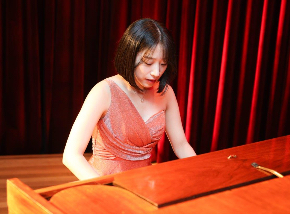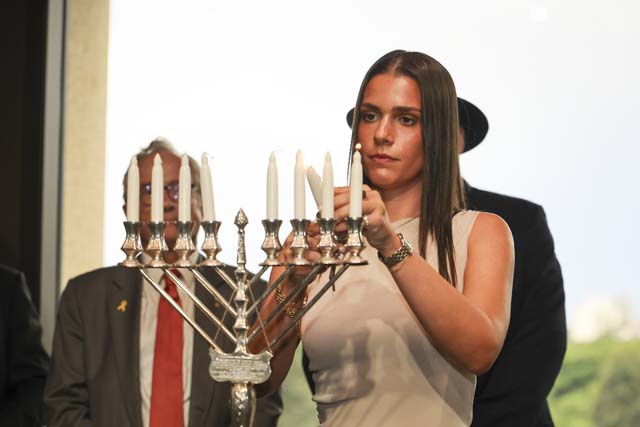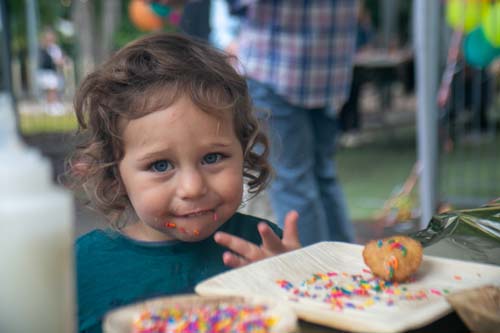From Australia’s Jewish past
May Vivian Saqui – a forgotten actor

May Saqui
May was born on 19 December 1879 in Nicholson Street, Fitzroy, Victoria. Her father, John Isaac Saqui (sometimes known as John but more commonly as Jack), was a Melbourne bookmaker and property speculator, later to try his hand at cigar manufacturing. Her mother, Esther (or Stella), was the daughter of the owner of a large central Melbourne grocery store. She and Jack had married in 1877. At the time of May’s birth, the family home was listed as being on the corner of Nicholson and Moor Streets, Fitzroy. Five years later, they lived next door. The two fine “boom era” buildings still stand at this spot, and today they speak of the opulence and confidence of the young colony following the gold rushes of the 1850s. When May was born, the family was wealthy enough to have servants.
May’s English-born grandfather, Abraham (Austin) Saqui, had arrived with some of the extended family in the colony of Victoria in the mid-1850s – like so many, they were attracted by the fabulous stories of easy fortunes to be made on the goldfields. He was keen to try his luck and travelled to Beechworth, in the centre of the Ovens Valley goldfields, along with so many others. He then became a Melbourne hotelier, a “flamboyant bookmaker”, and dabbled in owning horses. Austin’s great breakthrough came in 1869, when his horse “Warrior” won the Melbourne Cup, at odds of 20-1, winning him almost £20,000 – a fortune at the time.
Jack followed his father’s footsteps as a bookmaker, and after May’s birth, fathered several more children – Barnett “Baron” Napoleon, Gladys Mignonett and Hazel Eileen. Another daughter, Phyllis, died in infancy. By the time Hazel was born at Zabulon Terrace in Drummond Street in 1887, Jack was describing himself as a cigar-maker, whilst still a bookmaker, and the constant move of addresses also suggests he was still speculating on properties.
Sometime in 1890, Jack was assaulted as he arrived home at Drummond Street. He was struck on the head and found unconscious at his front door. It was thought this was part of an organised campaign to rob wealthy bookmakers. Whilst he recovered and returned to work, his mental health failed over the next six years. In August 1896, Stella took the heart-wrenching decision to have Jack admitted to the Yarra Bend Asylum. He had become seriously delusional. Stella blamed his state on the old injury to his head, and a note from a doctor she consulted (still in the asylum records) seems to concur. We can imagine the anguish the tight-knit family must have felt, and one wonders just how bad Jack had become before Stella was forced to have him hospitalised. Jack died in the Yarra Bend Asylum in October 1916. He had been there for twenty years.
May earned a name for herself as a talented dancer before she was ten – even in 1888, Melbourne Punch noted “this little lady really deserved the encore she received” with her performance in Dance Du Nuit. The family valued music and dance, and May was also to become a talented violinist. By May 1892, at the age of only 13, she left school and moved onstage – never to look back, and joined the cast of the Australia tour of the London Gaiety Company, in Faust up to Date, (choosing ‘Maie’ to be her stage name). The cast included a visiting troupe, plus Maud Hobson and Grace Wixon, well-known English performers, who would play a significant role in Maie’s life. From the late 1880s, Maie and her sister Gladys appeared in concerts under the guardianship of a relative, well-known Melbourne dance teacher Julia Green. At age 16, Maie performed at Melbourne’s Princess Theatre in the musical theatre production of “The Australasian”.
Unfortunately, at the same time Maie’s career was taking off, Australia and particularly the otherwise booming city of Melbourne had slumped into a severe depression. Several Australian banks closed between 1890 and 1893, numerous businesses shut down, and scores of land speculators were ruined. Unemployment surged, while the only public works to continue was the building of Melbourne’s much-needed sewerage system. It has been suggested that May’s father lost all his money at this time, and indeed, given his business interests, it would have been unusual if he did not take a hit of some sort.
Perhaps the highlight of Maie’s career was her performance in 1896 and her first Melbourne play, ‘Trilby’, based on a new Gothic novel by George du Maurier, a Franco-British cartoonist and writer for Punch and the Gothic novel on which the production was based. The anti-Semitic theme of the play (the evil manipulator of the heroine is Svengali, an archetypical Jewish villain of the Fagin, Oliver Twist type) was something Maie could live with or was used to. Her high-kicking dance in Act 2 was particularly memorable.
In May 1897, at the end of the run of ‘Trilby’, Maie announced she was heading to London to further her career. She travelled as a “23-year-old” on the RMS Orizba. By giving that age, there were fewer questions to answer than if acknowledging she had yet to turn 18. Good fortune and good connections were with her, and within weeks of her arrival in London, she was performing and soon had a contract with George Edwardes of the Gaiety Theatre. It was claimed that Grace Wixon, well-known within London’s theatre society, helped mentor her. For a short period, Maie was one of London’s celebrated “Gaiety Girls”, performing in musical comedies at George Edwardes’ Gaiety Theatre. The London Gaiety Company tour brought her into the company of numerous talented English performers – Maud Hobson and Grace Wixon amongst others. From 1893, she appeared in pantomimes including Little Red Riding Hood, Cinderella and then Djin-Djin – the famous spectacular Japanese burlesque pantomime.
Maie continued to be extremely successful in George Edwardes’ musicals. These included The Geisha in 1897, The Messenger Boy in 1900, Toreador in 1901 and Gilbert and Sullivan’s Trial by Jury in 1902. Melbourne newspapers enthusiastically reported on her London performances; she was, after all, a local girl. For example, on October 13 1899, “Table Talk” reported that “Miss Saqui’s… dainty dancing… delighted the patrons of ‘A Gaiety Girl’ at the Gaiety Theatre… Some two years ago… she submitted her credentials to that excellent judge, Mr. George Edwardes, who, more than satisfied with them, secured her services for three years, and she at once stepped, or bounded, into public favour….”
She returned to Melbourne after this most successful time on the London stage. Both Gladys and Hazel remained in London performing on stage for George Edwardes, appearing in musicals at the Gaiety between 1902 and 1910. Gladys particularly gained publicity, partly because she was like her sister May.
In 1904, May married Arthur Hope Travers, a Captain in the Grenadier Guards who had seen service in the Boer War. She chose to retire from the stage, but perhaps her health was already fading. A daughter was born in 1905. She was reported to be very ill in early 1907, and she died of cancer in March 1907, aged only 27. May’s English stage career had lasted just six years. May’s only child, Inez Hope Travers (later Pringle), lived a long life and was acknowledged in 1982 with the Venerable Order of the Hospital of St. John of Jerusalem, and then an MBE in 1986, for services to ex-servicemen in Dublin. It is safe to assume May would have been very proud.
The AJHS acknowledges the following references in the preparation of this story:
Forgotten Australian Actors – Stars of Old Fitzroy; The Register, Adelaide, South Australia – 11 May 1907; National Library of Australia – Trove – The Strange Story of Maie Saqui – John Shrimski – May’s second cousin

The Australian Jewish Historical Society is the keeper of archives from the arrival of the First Fleet in 1788 right up to today. Whether you are searching for an academic resource, an event, a picture or an article, AJHS can help you find that piece of historical material. The AJHS welcomes your contributions to the archives. If you are a descendant of someone of interest with a story to tell, or you have memorabilia that might be of significance for the archives, please make contact via www.ajhs.com.au or [email protected].








